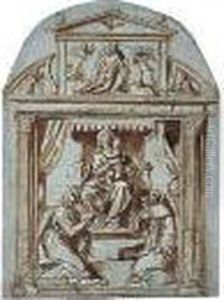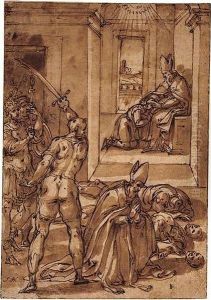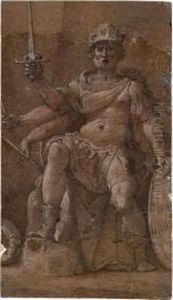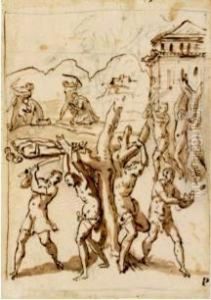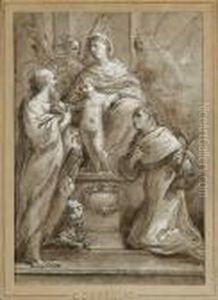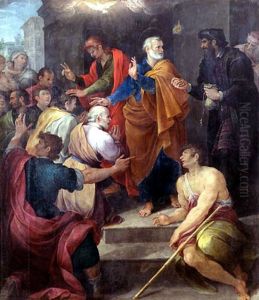Avanzino Nucci Paintings
Avanzino Nucci was an Italian painter born in 1552 in Gubbio, a town in the Umbria region of Italy, which during his lifetime was part of the Papal States. Nucci's artistic journey began in his hometown, but his ambition and talent soon led him to Rome, the epicenter of Renaissance art and culture. Rome during the late 16th and early 17th centuries was a vibrant artistic hub, attracting artists from all over Italy and Europe. It was here that Nucci further developed his skills and was exposed to the works of the great masters of the Renaissance.
Nucci's style was significantly influenced by the Mannerist movement, which was characterized by artificiality, grace, and elegance, departing from the proportional and realistic approaches of the High Renaissance. His work, however, also began to reflect the emerging Baroque style, which emphasized movement, vivid contrasts of light and shadow, and emotional intensity. This combination of influences allowed Nucci to develop a unique artistic voice, making his works distinctive.
Throughout his career, Avanzino Nucci was known for his religious paintings, which were commissioned by various churches and patrons within the Papal States. His ability to convey complex biblical narratives with emotional depth and visual splendor earned him considerable recognition. Furthermore, Nucci's skill in using color and light to enhance the dramatic impact of his scenes was particularly admired. Despite his success, Nucci's work was somewhat overshadowed by the more famous artists of his time, such as Caravaggio, whose revolutionary approach to painting had a profound impact on the art world.
Nucci's contributions to the Italian Renaissance and early Baroque periods may not be as widely recognized as those of his contemporaries, but his works remain an important part of Italy's rich artistic heritage. His paintings can still be seen in churches and galleries, where they continue to be appreciated for their beauty and emotional power. Avanzino Nucci passed away in 1629 in Rome, leaving behind a legacy that, while modest in comparison to the great masters, is a testament to the vibrant and evolving art scene of his time.
